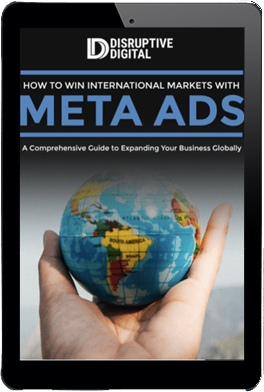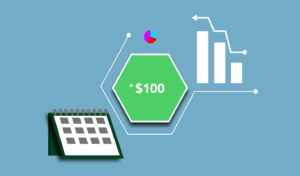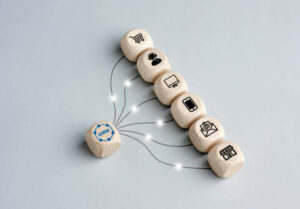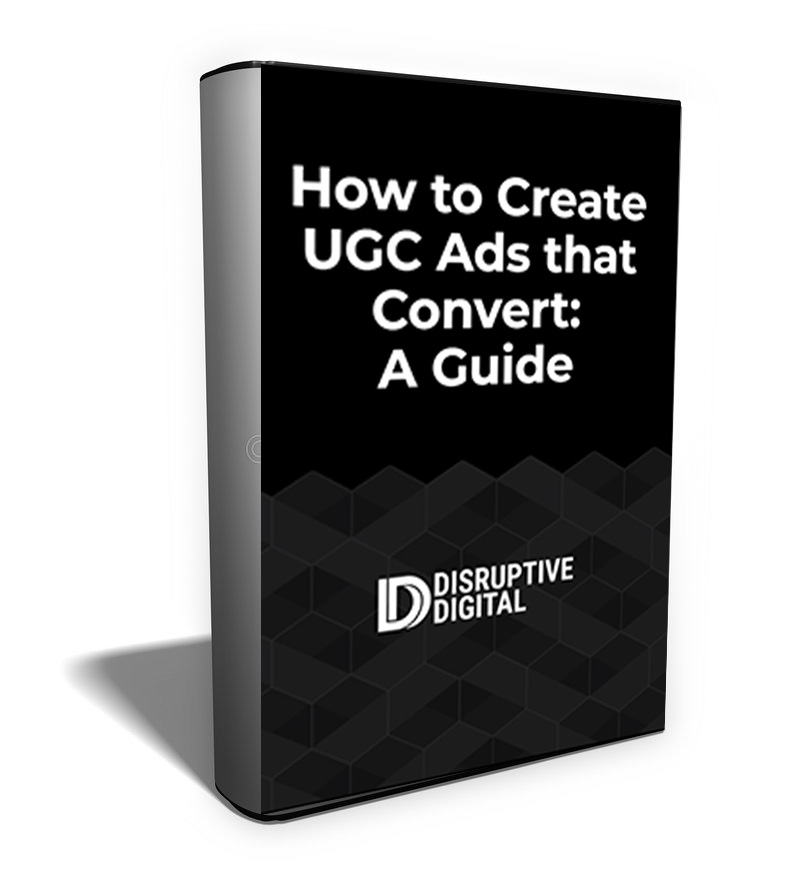Starting and growing a fledgling business is anything but easy, and once you’ve reached a strong foundation and are ready to grow, it only makes sense that you’d want to grow as quickly as you sustainably can.
We see this a great deal with our paid social clients who are ready to ramp up their ad spend quickly. They may be at a solid $1K-a-day ad spend, but are ready to take it up to $5K a day or more. And while it may seem like this should be as easy as a few clicks to adjust your budget within the Facebook Ads dashboard, that actually couldn’t be further from the truth.
There are certain steps you need to take when you want to scale to $5K a day in Facebook ad spend, and in this post, we’ll walk you through the process and flag some mistakes that you’ll want to avoid.
Why $1K Is a Safe Starting Point for Scaling Facebook Ad Spend
When you want to scale to $5K a day in Facebook ad spend, starting from a $1K a day ad spend is a safe starting point. This prevents you from running into common scaling issues that happen if you try to make enormous leaps too quickly.
If you’re going from $50 a day to $1,000, for example, you may see issues with key metrics deteriorating at a jarring level, which can include click-through rates, conversion rates, and higher ad costs.
It’s also worth pointing out that if you’re already at the $1K spending level, you’re likely to have funnel-focused campaigns already up and running at a strong level. You’ve tested, you know what works, and you have touch points for users at every stage of the buyer’s journey. All that testing data, too, will be helpful as you scale further moving forward.
How to Scale to $5K a Day in Ad Spend
Wondering how to scale your Facebook ad budget? These five tips will help you scale while improving your results instead of hindering them.
1. Base Leading Principles on the Facebook Power5
Facebook’s Power5 is a set of five different tactics that leverage on-platform, native automation and machine learning to significantly improve your results at a scalable level.
These five tactics include the following:
– Auto advanced matching, which allows you to send hashed customer information to use alongside your pixel for better attribution and improved reach for more conversions.
– Focusing on account simplification, which makes it significantly easier to manage campaigns at scale (we’ll look at how to use this in a minute).
– Campaign budget optimization, to have more ad spend going where it’s not only needed most, but where it’s also most likely to drive high ROI. Note that as a general rule of thumb, choose a daily budget with the following formula: CPA x 50 conversions / 7 days.
– Automatic placements, where Facebook chooses the optimal placements for your ads to keep your ad costs low while potentially maximizing results.
– Utilizing dynamic ads, which reduces the actual number of ads you run while still maximizing personalization for each ad viewer.
Most of our clients are familiar with these principles already, though we are still amazed with the number of ad accounts we audit that don’t have auto advanced matching turned on. We strongly recommend turning on advanced matching and overlaying it with manual matching, which involves adding additional snippets of code to your tracking pixel. You can learn what code is required here.
However, the newest and most robust tracking and measurement solution we recommend setting up is the Facebook Conversions API, which allows you to send web events like conversions or registrations from your servers straight to Facebook. You can see how to set it up here.
Note that if you’re a Shopify client, they have an integration with Facebook for advanced matching and the conversions API, so the set up is even easier. You can learn more about this here.
If auto advanced matching is like tracking 101, manual advanced tracking is 201, and the conversions API is 301. Take advantage of all three for the best results at scale.
2. Simplify Your Account Structure
When you’re at the point of being ready to scale up on Facebook Ads to a $5K a day budget, you need to make sure that your actual account structure is set up for success, too. Specifically, you’re going to want to simplify it as much as possible so that it’s easier to manage, monitor, and troubleshoot if necessary.
This is the basic account structure we recommend going with when you scale to $5K:
– Having one campaign for prospecting at the top of the funnel
– Having one campaign for re-engagement at the middle of the funnel
– Setting up one campaign for remarketing at the bottom of the funnel
– Running one campaign for DPA’s at the bottom of the funnel
Remember that a single campaign can contain multiple ad sets, which can contain multiple ads. Keeping it simple at the campaign level doesn’t prevent that, but it does increase organization significantly and allow for better optimization potential through Facebook.
3. Consolidate Audiences Where Possible
If you are spending a great deal of time running a large number of separate ads to test different audiences, now is the time to consolidate them wherever possible, taking the Power5 into account.
Are you able to consolidate a campaign that is retargeting to four different audiences into a single ad set by using dynamic ads to show users the right product, instead of running a separate ad for each individual landing page? We strongly recommend you do so.
4. Test Into Bigger Lookalike Audiences & Consider Removing Targeting Entirely
FREE GUIDE
How To Win International Markets with Meta Ads
Read Our Comprehensive Paid Social and Search Strategy to Expand Your Target Market Beyond Borders.
When you’re on a limited ad budget and creating lookalike audiences, it makes sense to focus on narrower audiences that are most similar to high-value customers. Once you’ve had your campaigns up and running, however, branching out into larger lookalike audiences is a smart way to scale.
Instead of utilizing smaller, higher qualified lookalike audiences, expand further to reach more people. At this point, Facebook’s machine learning is already familiar with who you’re looking for and who responds to your ads. You can afford to put the reigns in their hands. Not only will this increase your reach in numbers and cut back on frequency issues (if an audience is too small, after all, they’ll see your ad too many times and it will impact performance with ad fatigue), but this also lets the algorithm connect you with new audiences you might not have reached otherwise.
We also recommend testing targeting based exclusively on demographics (like 18+), letting the machine learning determine for themselves who best to reach with your message. This can help break what’s essentially a feedback loop from lookalike audiences to show Facebook more segments of your target audience, which can increase your performance overall.
If these campaigns don’t work, no big deal; go with what does, but you may be surprised by how effective they can be.
5. Test A Variety of Video & Static Content
When you increase your budget, you have more room to test additional ad campaigns. Test out a variety of both static and video creatives and see what your audience responds to.
It’s important to test constantly and consistently.
On average, advertisers who see heightened success with mobile video create 11x more creative assets (think 44 vs. 4), and contribute up to 3x more revenue growth. Research has also shown that campaigns using both static images and video campaigns saw a 17% higher conversion lift compared to static images alone.
You can see a list of Facebook’s best practices for direct response marketers here, but these are the basics:
– Have clear logos for strong brand association.
– Use product-focused creatives, where the product is the focal point of the copy and the image.
– Use the majority of the video to showcase the product or service being advertised.
– Make use of contrasting colors.
– In video, use quick movements and fast transitions to grab attention.
Facebook Ads Scaling Mistakes to Avoid
When scaling, knowing what to avoid doing wrong is just as important as knowing what to do right.
Avoid falling into these common pitfalls when scaling at any level:
– Don’t blend new and existing customers in a campaign. Split your account up using exclusions so there is a clear delineation between media and messaging targeting to new customers as opposed to those who have already purchased from you. These two groups have starkly different behavior patterns and offer very different value to your business. You also need to make sure enough of your budget is allocated to attracting new customers.
– Don’t expect the same performance. Facebook’s biggest strength is it’s ability to scale, so consider lowering your acquisition goal for new customers to break even. Then take advantage of email, SMS, and other channels to remarket to existing customers at a lower marginal cost while using Facebook’s analytics to help you measure your customer’s LTV.
– Don’t ignore the end pixel outcome. If you want purchases, don’t optimize for video views, clicks, or traffic. Facebook takes your end goal into consideration when choosing who to show Ads to. You could end up giving the system false positives by targeting goals too far up the funnel, wasting ad spend.
– Don’t forget the learning phase. It takes Facebook time to learn how your audience is responding to your ads. If you go from $1K to $5K in a single day, that can actually destabilize the algorithms and undo some of the machine learning. We recommend increasing your budget by no more than 25% at a time, giving the algorithm time to scale with you.
Final Thoughts
When you’re considering how to scale your Facebook Ads budget, it’s crucial to remember that the ads themselves aren’t the only piece of the puzzle you need to look at. What happens after someone clicks your ad is just as important, because the ad is only there to garner interest; it’s your landing pages and site that ultimately make the sale.
It’s essential to continuously evaluate the buying process, so watch this carefully as you expand your ad campaigns. Examine the following closely:
– Are you getting interest on your site, but no conversions? It may not be mobile optimized or it may be too difficult to buy from.
– Are you building trust by showing social proof, reviews, and testimonials early on?
– Are you accepting common payment options like credit card, PayPal, and other instant-pay options?
Use tools like Hotjar to monitor consumer behavior on your site, and implement post-purchase surveys to identify potential objections or blockers to sales. This can give you exceptional insight into how you can improve the overall funnel, ensuring that your site is ready for scaled up traffic coming from the ads themselves.







